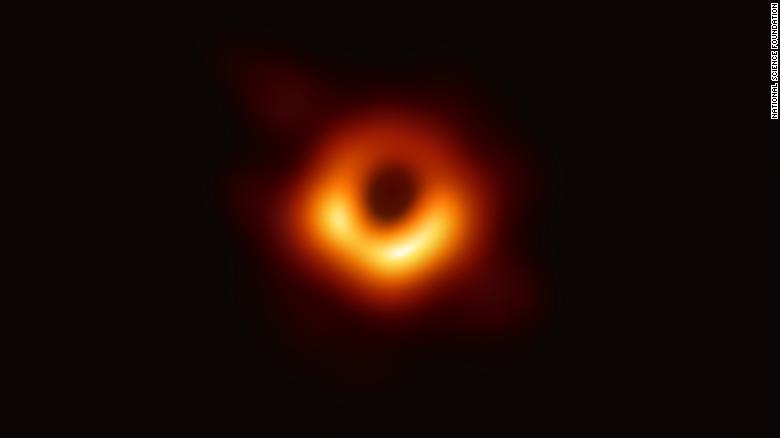The black hole in M87 is estimated at 6.5 billion solar masses so the Schwarzchild radius of its event horizon is 6.5 billion times the Schwarzchild radius of the mass of the Sun (3km) or about 20 billion km. (The Schwarzchild radius R = 2GM/c^2 scales directly with mass M. G is the universal gravitational constant and c is the speed of light.) As the black hole is rotating, one should more properly apply the Kerr metric rather than the Schwarzchild metric, which applies to non-rotating bodies. However, I don't know the rotation rate of this beast.
It will be interesting to see the imaging of Sagittarius A*, the much-less massive black hole at the centre of our Galaxy. It's estimated to be about 4 million solar masses so R would be 12 million km or about 0.08 AU.
The radius of the "shadow region" (which corresponds to the black blob) for a non-rotating black hole is 2.5 times the Schwarzchild radius. For a rotating black hole, this region is offset somewhat to the side that is rotating away from the observer, depending on the rotation rate.
ETA: If we had a much longer baseline, we could get much finer detail images. Time to build a radio observatory on the Moon? That would potentially increase the resolution at the 1.4 mm wavelength of these observations from 20 microarcseconds to about 1 microarcsecond.





